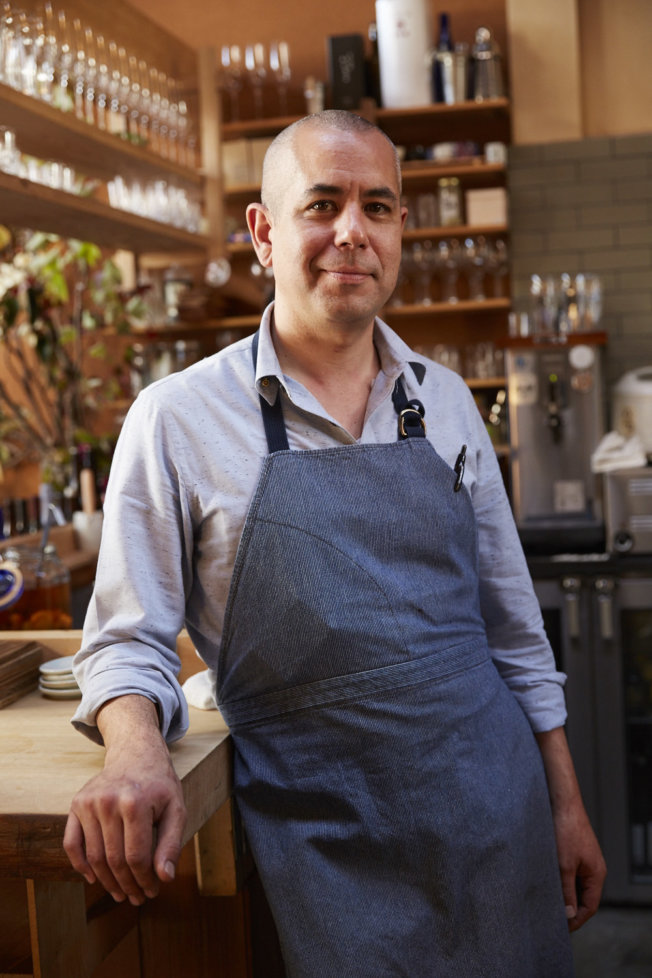
Chef Sylvan Mishima Brackett has spent his entire life straddling Japanese and California culture—a point of view that’s reflected in every inch of his San Francisco restaurant, Izakaya Rintaro. “Since I was very young, I’ve known that I wanted to open a restaurant,” says Sylvan Mishima Brackett. As it turns out, that’s the perfect way to share his story with the world.
The son of a temple carpenter, Brackett was born in Japan but spent his childhood living a quiet, idyllic life in the Sierra Foothills, in a house that his father built. “It was off the grid: We had running water, but didn’t have a flush toilet until I was 13,” he recalls. “That kind of Japanese country life is what I grew up with.”
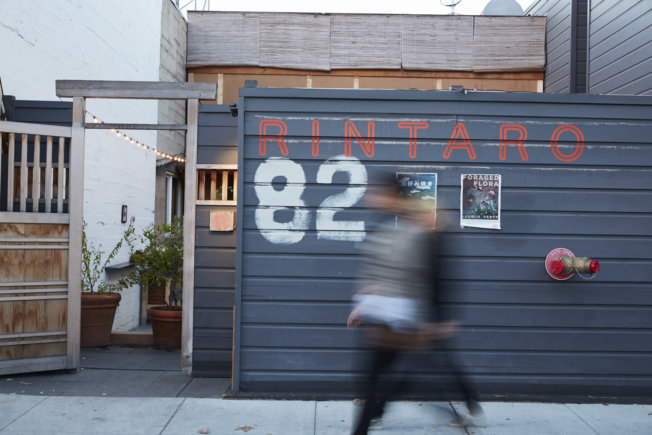
He first began working in restaurants at the age of 17, and cooking in between college semesters at French and Italian restaurants in Portland, OR. Then, following a post-college stint in Europe, he found himself in the Bay Area, and took a job at Chez Panisse, where he wound up as the assistant to Alice Waters.
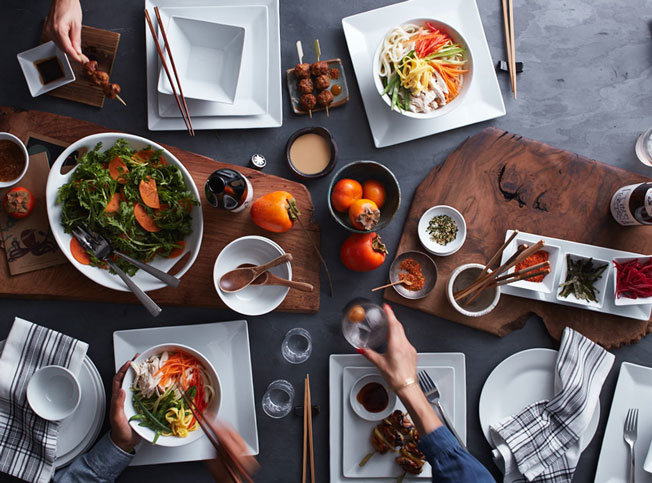
After seven years of working with Waters, Brackett left to pursue his own culinary dreams. As someone who’d spent much of his twenties eating and drinking in Japanese izakayas—casual restaurants that serve drinks and small bites of food—he decided he wanted to open one stateside. But the izakaya hadn’t yet caught on in the United States, and the chef had plenty to do before he was ready to open one of his own.
He founded his own company, Peko Peko, that catered bento boxes to the working set, food at weddings and hosted pop-up events. During that time, he perfected recipes, scouted out servers and cooks and worked on sourcing hard-to-find Japanese ingredients. (He now grows some rare produce, like yuzu and sansho, in the courtyard outside of his restaurant.) And he searched tirelessly for the right space.
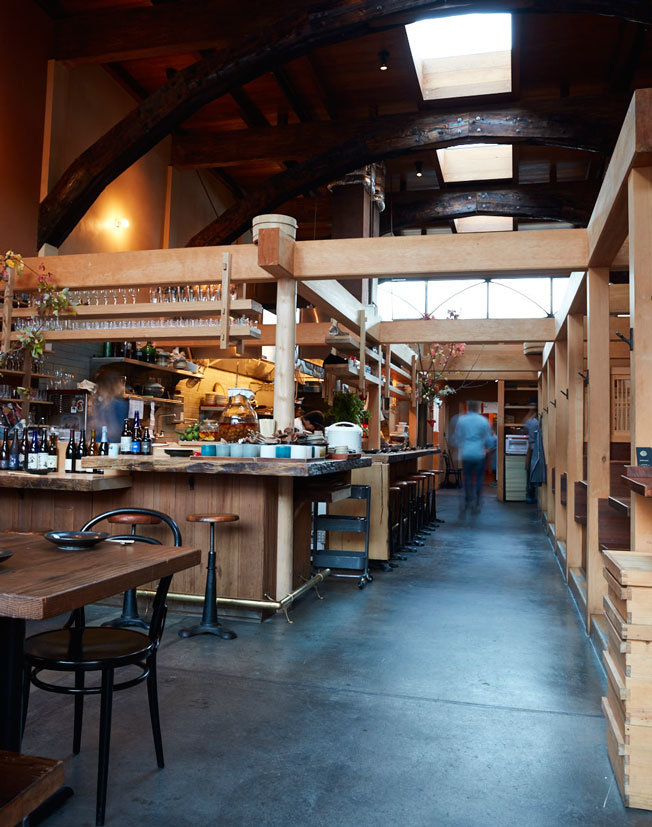
It took between three and four years to find the perfect space, a secluded spot on a quiet street of San Francisco’s bustling Mission district. It had been a French restaurant that burned down completely. “There was literally nothing, just those curved arches,” Brackett recalls, pointing up at the wooden arches that frame the ceiling of the restaurant. “We started six feet underground, redoing all the plumbing and electrical.”
Luckily, Brackett had been talking to his father for years about building a restaurant space. They built a traditional Japanese space made with very few nails, using traditional joinery techniques and beautiful wood from Brackett’s father’s lumber decks. He named it Rintaro, which Brackett explains means “Woods Boy,” a nod to both Sylvan’s name as well as the Japanese suffix -taro, which conveys an old-fashioned feel.
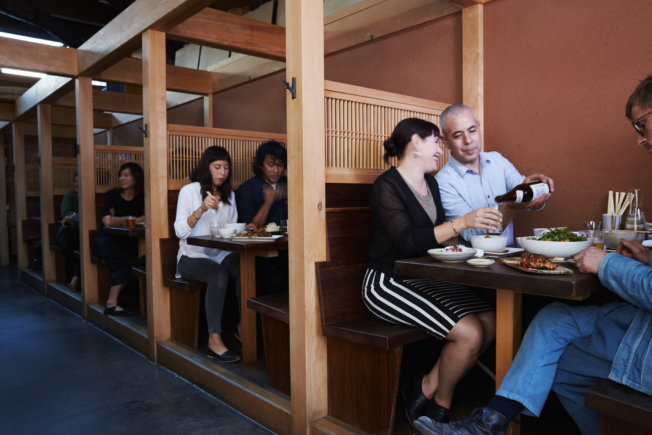
All of that care and attention to detail in on display for anyone enjoying dinner service at the restaurant. An open kitchen allows for a relationship between the cooks and the customers, and the restaurant’s long, narrow design resembles a machiya, a traditional Kyoto townhouse.
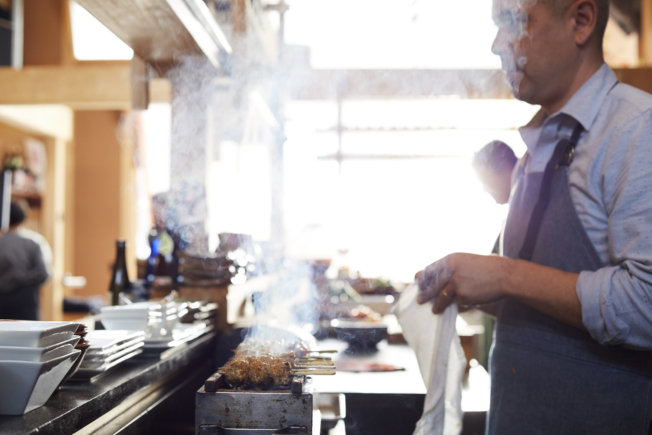
Like the space he and his father built, nothing on the menu is indeliberate. Brackett’s dishes, from the yakitori to the kabocha korokke (curry, potato and squash croquettes) made with heirloom kuri squash to the kake udon (noodles kneaded under foot and hand-cut, then served in a fish broth), show tremendous restraint. That’s intentional, and part of his izakaya approach: “I don’t want to have too many ingredients all competing against one another,” he says. “You want to have a number of dishes on the table that you’re eating at the same time; that’s where you get the complexity and depth.”
“My hope,” he continues, “is that people will get here and feel like they’ve found a little oasis to sit and drink, talk with friends and hang out.”
Learn more about chef Sylvan Mishima Brackett and how he transformed Izakaya Rintaro into a party for friends and family to celebrate his new Williams Sonoma cooking sauces.
